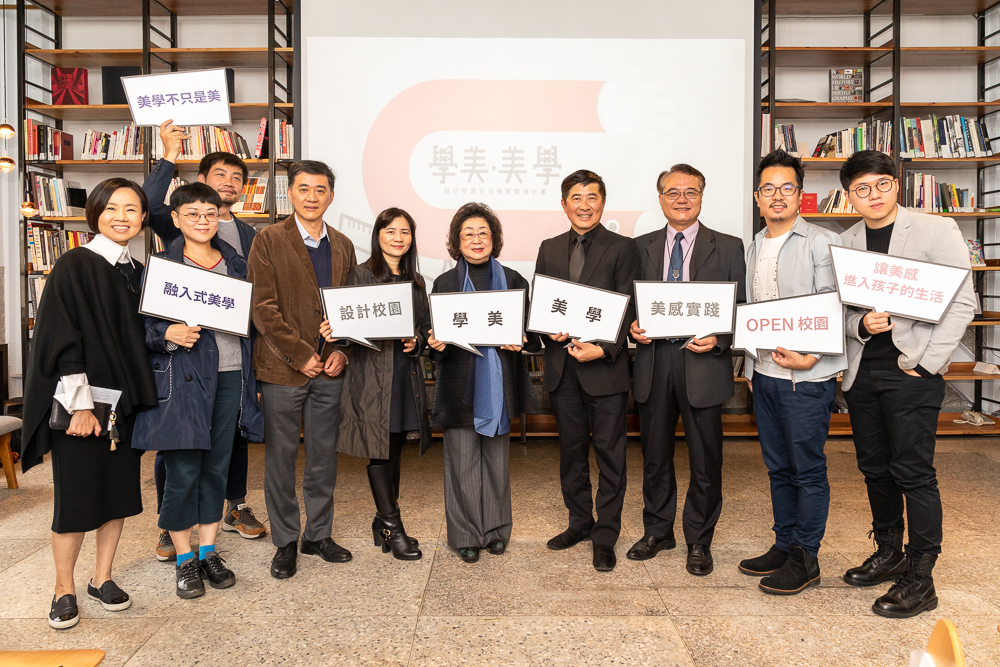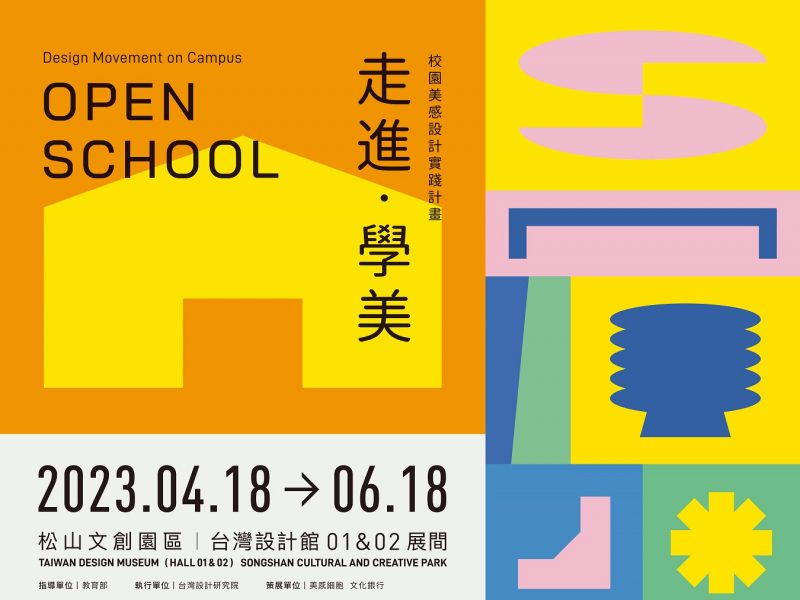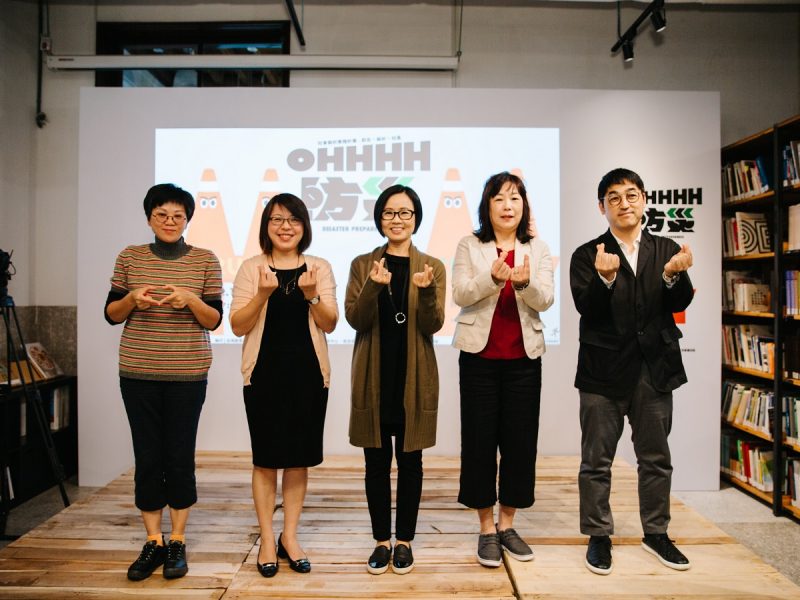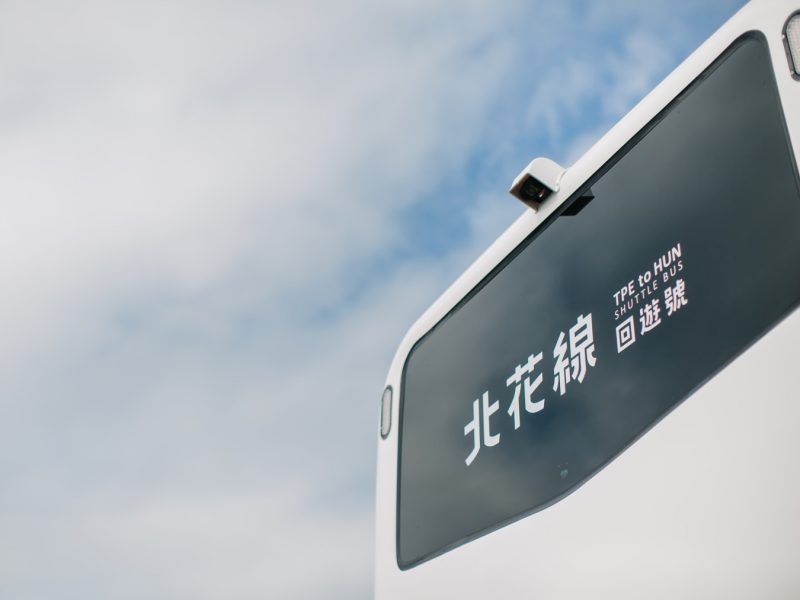▲ Group photo with press conference attendees, including: Deputy Minister of the Ministry of Education, San-Lu Fan (fifth from the left); Taiwan Design Center Chairman, Chi-Yi Chang (fourth from the right); Director General of the Ministry of Education, Cheng Yuan-Chuan (third from the right); Deputy Head of the Ministry of Education, Yu-Chuan Lee (fourth from left).
The Ministry of Education commissioned the Taiwan Design Center to organize Design Movement on Campus, a project designed to break free of traditional educational thinking and liberate students from the restrictions of textbooks and planned art courses — beginning with the physical surroundings. Design Movement on Campus starts by reforming the public spaces and objects that are part of students’ lives, encouraging students and teachers to suggest areas for improvement. After participating schools are selected they are then matched with relevant designers, who will first conduct an on-site assessment at the campus, and then work with the school to lead an aesthetic transformation.
Design Movements on Campus is working with schools all across Taiwan — 1,260 in northern Taiwan, 1,149 in central Taiwan, 1,166 in southern Taiwan, and 298 in eastern Taiwan and on Taiwan’s islands — including public and private senior high schools, as well as public junior high and elementary schools. Applications will be accepted until April 9th. Besides encouraging cooperation between design teams and schools, the Ministry of Education is offering subsidies according to the results of the campus selection. Subsidies will be split into three different levels, up to NTD 500,000, NTD 700,000, and NTD 950,000.
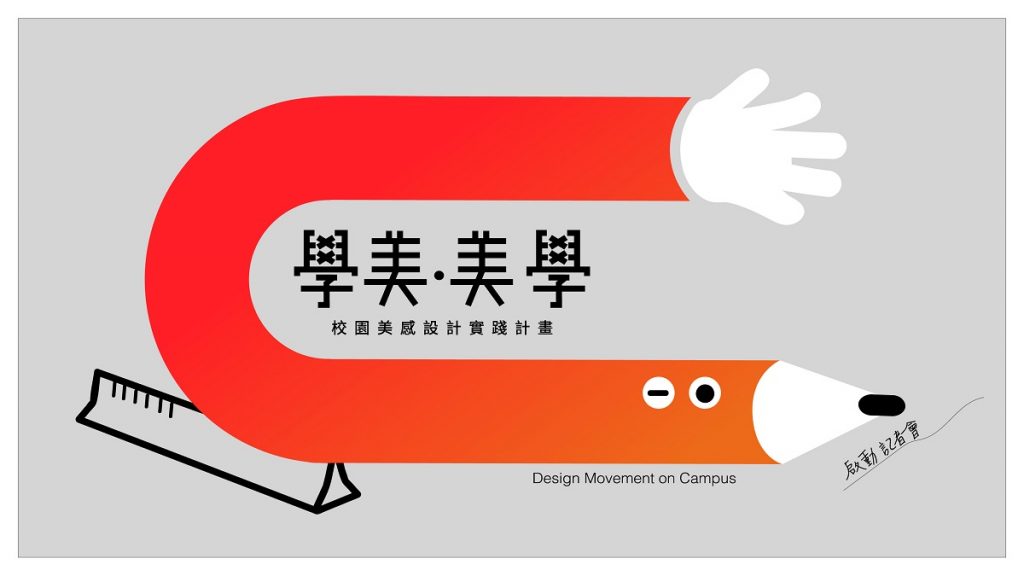
Today’s press conference was hosted by the deputy minister of the Ministry of Education, San-Lu Fan, and the Taiwan Design Center Chairman, Chi-Yi Chang. Leaders who have long been involved in public affairs and art education were also invited to take part in the conversation, including: the Aesthetic Textbook Project co-founder, Mu-Tien Chen; Pinmo Design Studio founder, Ching-Fu Wang; and long-time advocate for urban beautification and school aesthetic reform, and the founder of AGUA Design, Yu-Ru Zhou. The press conference kicked off with a discussion between leaders in this space, sparking the interest of those engaged in art education and school reform plans.
The movement to enhance campuses through design has already kicked off at a few elementary and junior high schools in Taiwan. For example, Tali Design remodeled the library at Lishin Elementary School, in Dali District, Taichung County by infusing the reading room with distinct elements of nature. The newly remodeled library uses wooden built-in bookcases to prominently display the library’s entire literary collection, much of which used to be hidden from view. In a provocative twist, the bookshelves are further built up to the ceiling, with shelves suspended from the ceiling — evoking the image of a thick canopy of trees, giving visitors an indescribable feeling of reading under the shade of a great forest. Rounded, stone-shaped bookshelves are scattered throughout the main floor, further invigorating the reading space. The nature-inspired theme of the reading room continues into the audio-visual education area, which is designed in a hexagonal shape, similar to that of a natural landform.
Furthermore, a designer at Fu Shing Junior High School — Taiwan’s first school with their own professional theatrical troupe — transformed the school’s unused bathrooms into a half-open “Star Experience Stage”. Now, students with a love for performance have an outlet for their budding theatrical ambitions.
Besides adding tangible creations, campus aesthetic reform must also embrace minimalism. The director and founder of AGUA Design, Ru-Yu Zhou, recalled a school’s sign system that included 10 different styles of restroom signs. This kind of messy system is not only disorganized, but also aesthetically displeasing. By using minimal design and eliminating unnecessary signs, one can maintain a consistent design that also meets the demands of designers. In short, the key to aesthetics is simplicity.
In order to deeply promote campus aesthetic reform, the Design Movement on Campus is divided into three different phases between 2019 and 2023. At the beginning of 2019, 8-10 schools will be selected as benchmark projects, and will help promote the project throughout Taiwan. From 2021 to 2022, the project will begin to mature, whereby secondary schools, primary schools, and local professional training schools will be encouraged to implement courses that take advantage of the Taiwan’s artistic and cultural resources and lift restrictions on art education. From 2022-2023 the program will be in full bloom. Artistic thought will penetrate the curriculum, while teachers will receive design training to broaden design education and allow art education become authentically integrated with daily life. The system-level reform will be implemented at all school levels throughout Taiwan.

